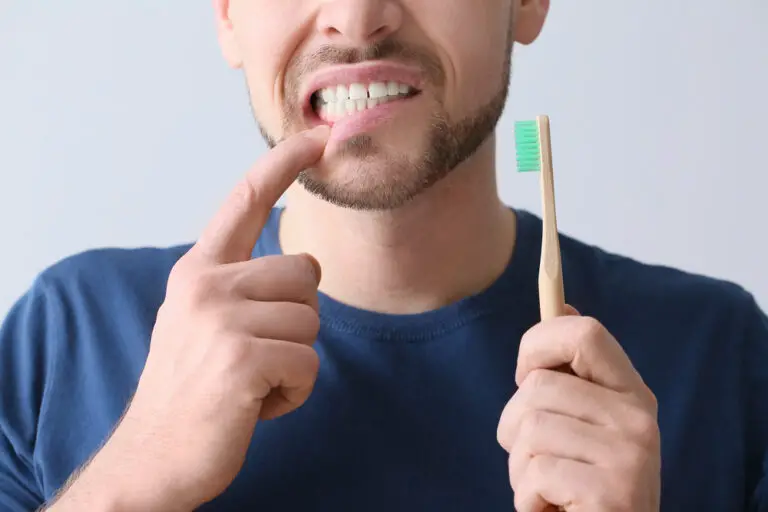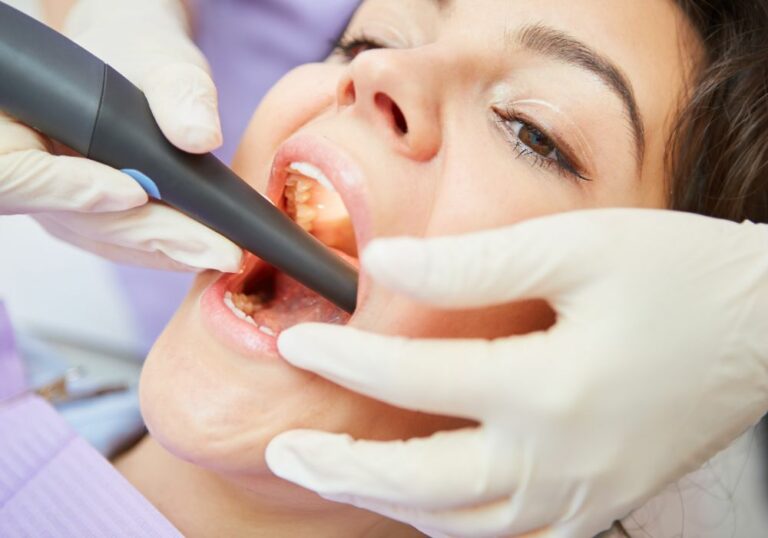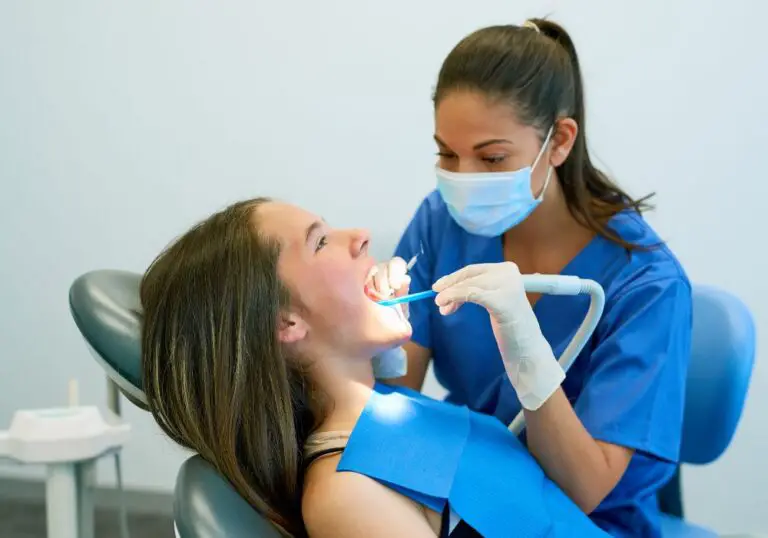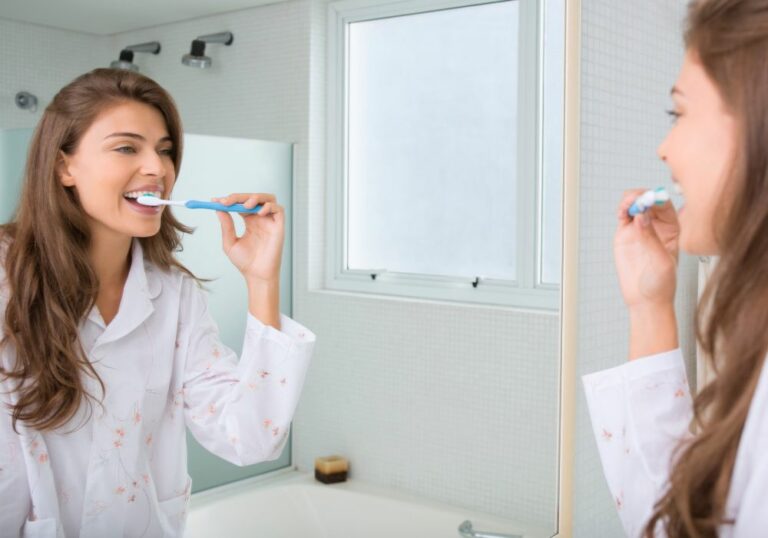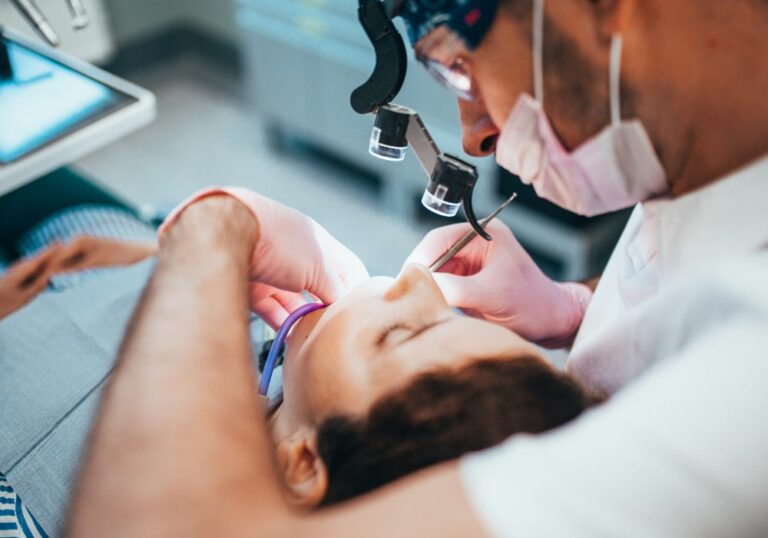Are you a new parent wondering what to expect when your baby’s top teeth start coming in? It’s normal to feel a little anxious about your baby’s teething process, but don’t worry, we’ve got you covered. In this article, we’ll answer the question, “What do gums look like when top teeth are coming in?” so you can be prepared for what’s to come.
As your baby’s top teeth start to emerge, you may notice some changes in their gums. The gums may appear swollen or red, and you may be able to see or feel the new teeth just below the surface of the gums. You may also notice that your baby is drooling more than usual, and may be fussier or more irritable than usual. These are all normal signs of teething, and while it can be uncomfortable for your baby, it’s a natural part of their development.
It’s important to remember that every baby is different, and teething can be a different experience for each baby. Some babies may experience more discomfort than others, while others may not show any signs of discomfort at all. However, if you have any concerns about your baby’s teething process, or if you notice any unusual symptoms, be sure to talk to your pediatrician.
Understanding Baby Teeth Eruption

As a parent, you may be wondering when your baby’s teeth will start coming in. It’s important to understand the stages of baby teeth eruption so you can know what to expect and how to care for your baby’s teeth.
Stages of Baby Teeth Eruption
There are two sets of teeth that will develop in your child’s lifetime: baby teeth and permanent teeth. Baby teeth, also known as primary teeth, usually start erupting around six months of age and will continue to come in until around age three. Here are the stages of baby teeth eruption:
- Lower front teeth: The two bottom front teeth are usually the first to come in around six to eight months of age.
- Upper front teeth: The top front teeth will follow shortly after, usually around eight to ten months of age.
- Side teeth: The teeth on either side of the front teeth will come in next, usually around nine to 11 months of age.
- First molars: The first molars will come in next, usually around 12 to 16 months of age.
- Canines: The canines, or “fangs,” will come in next, usually around 16 to 20 months of age.
- Second molars: The second molars will come in last, usually around 20 to 30 months of age.
It’s important to note that these are general guidelines and every child is different. Some children may start teething earlier or later than others, and the order of eruption may vary.
During the teething process, your baby’s gums may appear swollen and red. You may also see small white bumps or spots along the gum line where the teeth are about to erupt. Your baby may experience discomfort and irritability during this time, so it’s important to provide soothing measures such as teething toys or a cool, damp washcloth.
In conclusion, understanding the stages of baby teeth eruption can help you prepare for and care for your baby’s teeth. Remember to schedule your child’s first dental appointment around their first birthday to ensure proper dental care and development.
Signs of Top Teeth Coming In
If your baby is around six months old, you may start to notice some signs that their top teeth are coming in. Here are some things to look out for:
Swollen Gums
One of the most common signs of teething is swollen gums. You may notice that your baby’s gums are red, tender, and swollen where the top teeth are coming in. It can be uncomfortable for your baby, and they may try to relieve the discomfort by biting or chewing on things.
Increased Drooling
Another sign that your baby’s top teeth are coming in is increased drooling. You may notice that your baby is drooling more than usual and that their saliva is thicker and stickier than usual. This is because the extra saliva helps to soothe and lubricate the gums as the teeth come in.
Irritability
Teething can be uncomfortable and painful for babies, which can make them irritable and fussy. You may notice that your baby is more cranky and restless than usual, especially at night when they are trying to sleep. They may also have trouble eating or drinking, which can make them even more irritable.
In summary, if you notice swollen gums, increased drooling, and irritability in your baby, it may be a sign that their top teeth are coming in. Remember to provide your baby with safe objects to chew on, such as teething rings, to help relieve their discomfort.
What Do Gums Look Like?
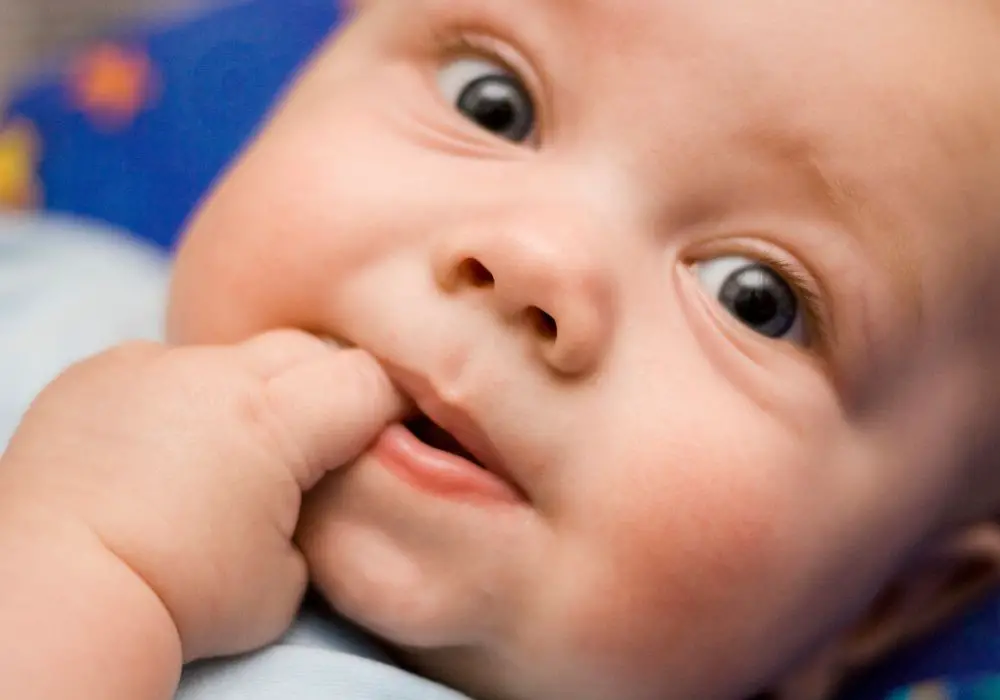
When your top teeth are coming in, you may wonder what your gums look like. Here’s a brief overview of the appearance of gums before and during eruption.
Appearance of Gums Before Eruption
Before your top teeth come in, your gums may appear smooth and flat. They may also have a bluish-gray color. This is because a layer of skin covers your teeth until they are ready to emerge.
During this time, you may notice small bumps on your gums. These bumps are called “eruption cysts” and are filled with fluid. They are a normal part of the eruption process and usually go away on their own.
Appearance of Gums During Eruption
As your top teeth begin to emerge, your gums may become red and swollen. This is because your body is sending more blood to the area to help with the eruption process.
You may also notice that your gums are sore or tender to the touch. This is normal and can be relieved with a cold, damp cloth or teething ring.
As your top teeth continue to emerge, you may see small white spots on your gums. These spots are called “eruption granulomas” and are also a normal part of the eruption process.
Overall, the appearance of your gums during the eruption of your top teeth is a normal and temporary process. If you have any concerns about your child’s gums or teeth, be sure to consult with your dentist.
Caring for Baby’s Gums
Teething can be a challenging time for both babies and parents. As your baby’s top teeth start to come in, it’s important to take extra care of their gums to ensure they stay healthy and pain-free. Here are some tips for caring for your baby’s gums during this time.
Cleaning Baby’s Gums
Even before your baby’s teeth come in, it’s important to keep their gums clean. You can do this by gently wiping their gums with a clean, damp cloth after feedings. This helps to remove any leftover milk or formula that can build up on their gums and lead to bacteria growth.
Once your baby’s teeth start coming in, you can begin to use a soft-bristled toothbrush to clean their teeth and gums. Place the toothbrush at a 45-degree angle along the gum line and gently brush in circular motions. Be sure to use a small amount of toothpaste (about the size of a grain of rice) and avoid fluoride toothpaste until your baby is old enough to spit it out.
Soothing Sore Gums
Teething can be painful for babies, and they may experience sore or tender gums. To help soothe their discomfort, you can try the following:
- Give your baby a clean, cold washcloth or teething ring to chew on. The cold temperature can help numb their gums and provide relief.
- Rub your baby’s gums with a clean finger. This gentle pressure can help alleviate their discomfort.
- Offer your baby cold, soft foods like yogurt or applesauce. The cool temperature can help soothe their gums while the soft texture is gentle on their teeth.
Remember, teething is a normal part of your baby’s development, and with a little extra care, you can help make the process as comfortable as possible.
When to Consult a Pediatric Dentist

If your child is experiencing severe pain or discomfort during teething, it’s important to consult a pediatric dentist. Additionally, if you notice any unusual symptoms or changes in your child’s gums, it’s best to seek professional advice.
Here are some signs that you should schedule an appointment with a pediatric dentist:
- Your child is experiencing severe pain or discomfort that cannot be relieved with over-the-counter remedies.
- Your child’s gums are bleeding excessively or appear infected.
- Your child is having trouble eating or drinking due to teething pain.
- You notice unusual swelling, bumps, or lumps on your child’s gums.
- Your child is not developing teeth at the expected rate or is experiencing delayed tooth eruption.
A pediatric dentist can examine your child’s teeth and gums to determine if there are any underlying issues causing discomfort or delays in tooth eruption. They can also provide guidance on proper oral care for infants and young children, including recommendations for toothbrushes, toothpaste, and other products.
Remember, regular dental checkups are important for maintaining your child’s oral health and preventing future dental problems. If you have any concerns about your child’s teeth or gums, don’t hesitate to schedule an appointment with a pediatric dentist.
Frequently Asked Questions
What are common signs of teething in babies?
Teething is a natural process that all babies go through, but it can be uncomfortable for them. Some common signs of teething in babies include drooling, irritability, and chewing on objects. You may also notice that your baby’s gums are swollen or red.
How can I soothe my baby’s teething pain?
There are several things you can do to help soothe your baby’s teething pain. You can try giving them a cold teething ring or a wet washcloth to chew on. Massaging their gums with a clean finger can also help. If your baby is particularly fussy, you can try giving them some infant pain relief medication, but be sure to follow the dosage instructions carefully.
What is the average age for a baby’s first tooth to come in?
The average age for a baby’s first tooth to come in is around 6 months, but it can vary widely. Some babies may start teething as early as 3 months, while others may not get their first tooth until they are a year old.
What are some common teething symptoms?
In addition to swollen or red gums, some common teething symptoms include fussiness, drooling, and chewing on objects. Your baby may also have trouble sleeping or eating, and they may be more prone to ear infections or diaper rash during this time.
What should I do if my baby’s teething seems particularly painful?
If your baby’s teething seems particularly painful, you may want to talk to your pediatrician. They can recommend pain relief medication or other treatments to help soothe your baby’s discomfort. You should also make sure that your baby is getting plenty of rest and staying hydrated during this time.
Are there any home remedies for teething pain that actually work?
There are several home remedies that may help soothe your baby’s teething pain. Some parents swear by natural remedies like chamomile tea or clove oil, but it’s important to talk to your pediatrician before trying any new treatments. You can also try giving your baby a cold teething ring or a wet washcloth to chew on, or massaging their gums with a clean finger.

